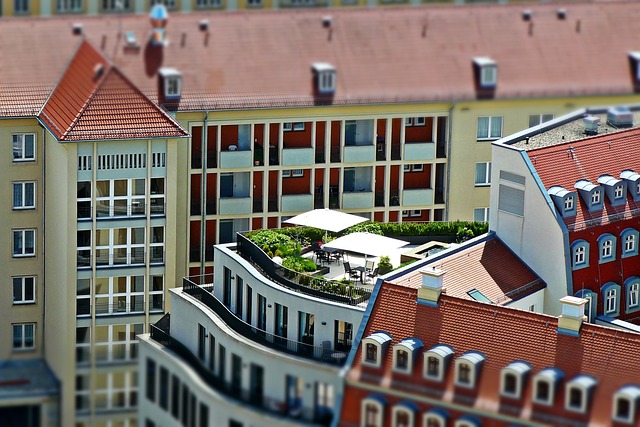- Evaluating Durability: The Best Flat Roofing Materials for Long-Term House Roof Protection
- Comparing Performance: EPDM Rubber vs. TPO and PVC Membranes in Flat Roof Applications
- Advanced Technologies: Exploring Modern Flat Roof Systems and Their Lifespan Advantages
- Maintenance Matters: Ensuring the longevity of Your Flat Roof with Proactive Care and Repairs
Evaluating Durability: The Best Flat Roofing Materials for Long-Term House Roof Protection
Comparing Performance: EPDM Rubber vs. TPO and PVC Membranes in Flat Roof Applications
When evaluating high-quality materials for flat roofing applications, EPDM rubber, TPO (Thermoplastic Olefin), and PVC (Polyvinyl Chloride) membranes emerge as leading contenders. EPDM rubber has been a staple in the roofing industry due to its proven durability and flexibility, which makes it suitable for a variety of house roof designs. It is resistant to ozone, ultraviolet light, hail, and high winds, factors that contribute to its longevity and reliability as a protective layer.
In contrast, TPO and PVC membranes offer their own sets of advantages. TPO membranes are known for their energy efficiency, as they reflect sunlight effectively, reducing the heat absorbed by the roof and, consequently, the cooling costs for the occupied space below. PVC membranes, on the other hand, provide exceptional tensile strength and long-term performance, with a proven track record of resisting punctures and tears. Both TPO and PVC offer superior resistance to chemical exposure, which can be critical in environments where such exposure is a concern.
Comparing the performance of EPDM rubber, TPO, and PVC in flat roof applications reveals that each material has distinct properties that make it suitable for different scenarios. Homeowners and contractors must consider factors such as the building’s location, environmental conditions, budget, and specific needs when choosing between these high-performance materials to ensure the optimal protection for their house roof.
Advanced Technologies: Exploring Modern Flat Roof Systems and Their Lifespan Advantages
In recent years, advancements in roofing technology have significantly enhanced the durability and lifespan of flat roof systems. Modern flat roofs for houses often incorporate high-performance materials such as ethylene propylene diene monomer (EPDM), thermoplastic olefin (TPO), or modified bitumen, which are designed to withstand environmental stressors effectively. These materials offer superior resistance to extreme temperatures, UV radiation, and punctures, extending their longevity beyond traditional roofing options. EPDM and TPO membranes, in particular, have gained popularity due to their reflective surfaces that not only improve energy efficiency but also ensure a longer service life by reducing heat buildup and subsequent material degradation.
The integration of cutting-edge technologies such as green roof systems further bolsters the lifespan of flat roofs. These systems combine waterproof membranes with layers of soil and vegetation, providing additional insulation and protection against weather elements. Not only do they contribute to sustainable building practices by reducing the urban heat island effect and improving air quality, but they also offer a robust barrier against UV rays and foot traffic, which are common causes of roof deterioration. As a result, these advanced systems can potentially double the lifespan of a standard flat roof, making them a wise investment for homeowners and building managers alike.
Maintenance Matters: Ensuring the longevity of Your Flat Roof with Proactive Care and Repairs
Regular upkeep is a cornerstone in extending the lifespan of a high-quality flat roof. Property owners should prioritize timely inspections to identify and address potential issues before they escalate. This proactive approach not only safeguards the integrity of the house roof but also mitigates costly repairs down the line. Effective maintenance practices include removing accumulated debris, which can impede drainage and lead to water retention or leaks. Additionally, a thorough inspection post extreme weather conditions is essential to ensure that the flat roof’s seams, flashing, and joints remain watertight, preserving the roof’s functionality and protecting the structure it covers.
Professional repair services specializing in flat roofing can provide targeted solutions tailored to the specific materials of your house roof. These experts are adept at recognizing signs of wear that may compromise the roof’s performance, such as blistering or splitting of the membrane, and can apply durable, weather-resistant sealants to reinforce vulnerable areas. By engaging in regular maintenance and prompt repairs, property owners can significantly enhance the longevity and resilience of their flat roof, ensuring its optimal performance over time.
